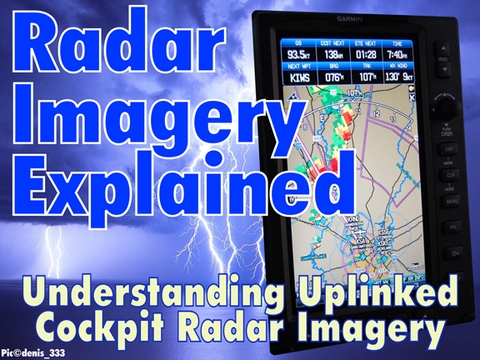Is the Emperor Naked? It Sure Looks That Way
 The illusion here is based on the FAA’s belief that student pilots can be taught risk management skills. Learning to manage risk, however, requires prerequisite knowledge that student pilots typically do not have, nor is that knowledge typically available in any FAA document. So why does the FAA think that student pilots can be taught to manage risk? Why does the FAA see clothes where others see a nudist? Let’s find out.
The illusion here is based on the FAA’s belief that student pilots can be taught risk management skills. Learning to manage risk, however, requires prerequisite knowledge that student pilots typically do not have, nor is that knowledge typically available in any FAA document. So why does the FAA think that student pilots can be taught to manage risk? Why does the FAA see clothes where others see a nudist? Let’s find out.
The dictionary defines risk as exposure to the chance of injury or loss. The key word here is chance. Risk management assumes that you know the chance—the probability—that an event might occur. For student pilots (or any low time pilot), event probability (risk) is extremely difficult (if not impossible) to evaluate, much less look up in some database that does not exist. It requires a background in statistical analysis or extensive aviation experience from which probability assessments might be intuited.
Keep in mind that NASA used risk assessment to identify the risks associated with flying the space shuttle. Their engineers, mathematicians and statisticians concluded that there was a 1 in 100 chance of losing a shuttle on every flight. Now that’s "authentic" risk assessment. Clearly this isn’t something that student pilots (or low-time pilots) are capable of doing. Most likely, these individuals don’t have the statistical knowledge to make these assessments (assuming the data are even available for this task) nor do they have the working substitute for this knowledge known as “aviation experience” with which to make risk assessments. If you can’t assess the risk, you can’t manage the risk (unless you simply don’t fly... and what fun is that?).
Nevertheless, a fundamental feature of the FAA’s Risk Management Handbook is the Risk Assessment Matrix (shown below). This chart requires knowing the probability (i.e., likelihood) that an event might occur, and its severity should it occur. It also requires that you know what risk level is acceptable to you. Yet, the FAA never defines the "likelihood" values on the left vertical axis of this matrix. For instance, if the severity of an event is "catastrophic" but "improbable," it's listed in the green or "medium" risk category. So why is that airline pilots avoid areas of red on their radar screens (red areas represent a 2% chance of destructive turbulence)? It seems as if a 2% chance of something happening falls into the "improbable" range of likelihood, doesn't it? One might think so. Yet, airline pilots who see red colored radar returns on their radar screen avoid the area with a passion despite the event falling into the green or "medium" risk range on the FAA's matrix. So how can we talk about risk management when we can't speak with any precision about the risks we're willing to take?

The fact is that the FAA can't offer numerical "likelihood" values because they don't know what these values are for any given situation. Said another way, the FAA wants you to assess then manage risk, but they can't tell you what an acceptable risk is (outside one that falls into the right, bottom corner of the risk matrix). Can we really expect students (or low time pilots) to possess this knowledge and make these calculations? This seems unreasonable to me. Except for the extreme ranges of risk, the FAA's idea of risk assessment relies on vague impressions, incalculable assumptions and a great deal of wishful thinking.
The ironic thing, however, is that the FAA agrees with my assessment despite promoting the "fantasy" that risk management skill is within the skill range of a low-time aviator. Take a look at the following excerpt from Page 1-5 through 1-6 of its Risk Management Handbook (FAA-H-8083-2):
Managing Risks - Excerpt
"Risk is the degree of uncertainty. An examination of risk management yields many definitions, but it is a practical approach to managing uncertainty. Risk assessment is a quantitative value assigned to a task, action, or event.... Take the use of improper hardware on a homebuilt aircraft for construction. Although one can easily see both the hazard is high and the severity is extreme, it does take the person who is using those bolts to recognize the risk. Otherwise, as is in many cases, the [risk assessment matrix] chart is used after the fact.... Therefore, risk management is the method used to control, eliminate, or reduce the hazard within parameters of acceptability. Risk management is unique to each and every individual, since there are no two people exactly alike in skills, knowledge, training, and abilities. An acceptable level of risk to one pilot may not necessarily be the same to another pilot...."
On the other hand, what if we speak in terms of hazards instead of a risk? A hazard is defined as a danger or a peril. It’s something concrete that students can be taught to identify and avoid. Calculating probability is not required here because a hazard is not a data point on a risk assessment matrix. You don’t need to be a tai “chi-squared” master to recognize danger.
Hazard avoidance is precisely what good pilots do. They visually avoid thunderstorm cells by a minimum of 20 miles. Period! They avoid flying into known icing conditions in an airplane not certified for flight into known icing conditions. Sure, they might climb or descend through an area of ice, but only if they know that they can quickly move into conditions not conducive to ice formation. They know their personal crosswind limits and avoid landing when those limits will be exceeded. There's no calculation or probability assessment taking place here (at least not as the FAA defines it). Good pilots think in terms of hazard avoidance; good instructors teach in terms of hazard avoidance.
Once again the FAA agrees with me on this point despite pretending that inexperienced pilots can actually assess risk. Take a look at the following excerpt from Page 17-4 of the FAA's Pilot Handbook of Aeronautical Knowledge (FAA-H-8083-25A).
Hazard and Risk - Excerpt
"Two defining elements of ADM are hazard and risk. Hazard is a real or perceived condition, event, or circumstance that a pilot encounters. When faced with a hazard, the pilot makes an assessment of that hazard based upon various factors. The pilot assigns a value to the potential impact of the hazard, which qualifies the pilot’s assessment of the hazard—risk.
Therefore, risk is an assessment of the single or cumulative hazard facing a pilot; however, different pilots see hazards differently. For example, the pilot arrives to preflight and discovers a small, blunt type nick in the leading edge at the middle of the aircraft’s prop.... The seasoned pilot may see the nick as a low risk. He realizes this type of nick diffuses stress over a large area, is located in the strongest portion of the propeller, and based on experience, he doesn’t expect it to propagate a crack which can lead to high risk problems. He does not cancel his flight. The inexperienced pilot may see the nick as a high risk factor because he is unsure of the affect the nick will have on the prop’s operation and he has been told that damage to a prop could cause a catastrophic failure. This assessment leads him to cancel his flight."
Student pilots are fully capable of avoiding in-flight hazards with a little training. All that’s needed is for their instructors to help them identify these hazards in specific and general terms. No doubt, "hazard avoidance" inspires conservative behaviors which might be interpreted as being overly cautious. OK, so what? If low time pilots can't possibly calculate the risk of danger in an event, it makes much more sense for them to behave cautiously, at least until they have the experience necessary to make a reasonable assessment of risk.
Specific hazards are sometimes defined by the limitations placed on a student by the instructor or by the Federal Aviation Regulations. An instructor might inform his or her students not to fly when the direct crosswind component exceeds a specific value, when the flight visibility is less than three miles and when the flight cannot be made with visual reference to the surface, to name a few. Instructors can add as many additional items to the specific hazards list as necessary to ensure their student’s safety.
General hazards are sometimes best described in the succinct and condensed literary packages known as aviation aphorisms. These are wisdom-packed, hazard-avoidance lessons that students can easily remember. Here are just a few examples.
There’s nothing more useless than the altitude above you and the runway behind you. Takeoffs are optional but landings are mandatory. The only time you have too much fuel is when you’re on fire. The probability of survival is equal to the angle of arrival. Learn from the mistakes of others because you won’t live long enough to make all of them yourself. And so on.
These aphorisms are powerful behavior modifiers that can help student pilots make better decisions aloft and they have nothing to do with risk assessment. So fill your student’s noggin with these general, poetry-like quips of flying wisdom, along with your own specific warnings of hazards.
At this point you’re probably asking, What’s the downside to speaking in terms of risk management at the student pilot level? There are three important reasons not to pretend you’re teaching students to assess risk when they’re not.
First, students can’t manage risk unless they can assess it. Since they’re unlikely to have the skill and data to do this, they’re more likely to proffer a guess, instead. To the student pilot, risk assessment is guess assessment.
Second, an incorrect guess might result in the student making a poor decision while feeling confident of the outcome. There’s no upside to guessing wrong while feeling you’ve chosen wisely.
Third, while highly experienced pilots might be able to assess probabilities based on their experience, they typically don’t do this. Instead, they reduce their mental workload by identifying and avoiding areas of known danger. As a general rule, very little (if any) probability calculation takes place inside a pilot’s noggin. When an airline captain sees red on her airborne radar screen, he’s not thinking, “Hmm, let’s see, red represents an area of 40 to 50 dBZs of radar reflectivity which is statistically associated with a 2% chance of destructive turbulence so I’m going to avoid that area.” Instead, he sees a hazard (a red colored echo) and avoids all contiguous echoes associated with that hazard by at least 20 nautical miles.
If you’re a flight instructor and want to offer a practical lesson for your students, teach them to avoid hazards. Don't tell them they are "assessing" risks. They are not. This isn't something they can actually do. Leave probability assessment for the professional mathematicians. Avoid the illusion; embrace the practical.
In the meantime, if you see nice looking outfit for sale, I know an emperor who needs one.

